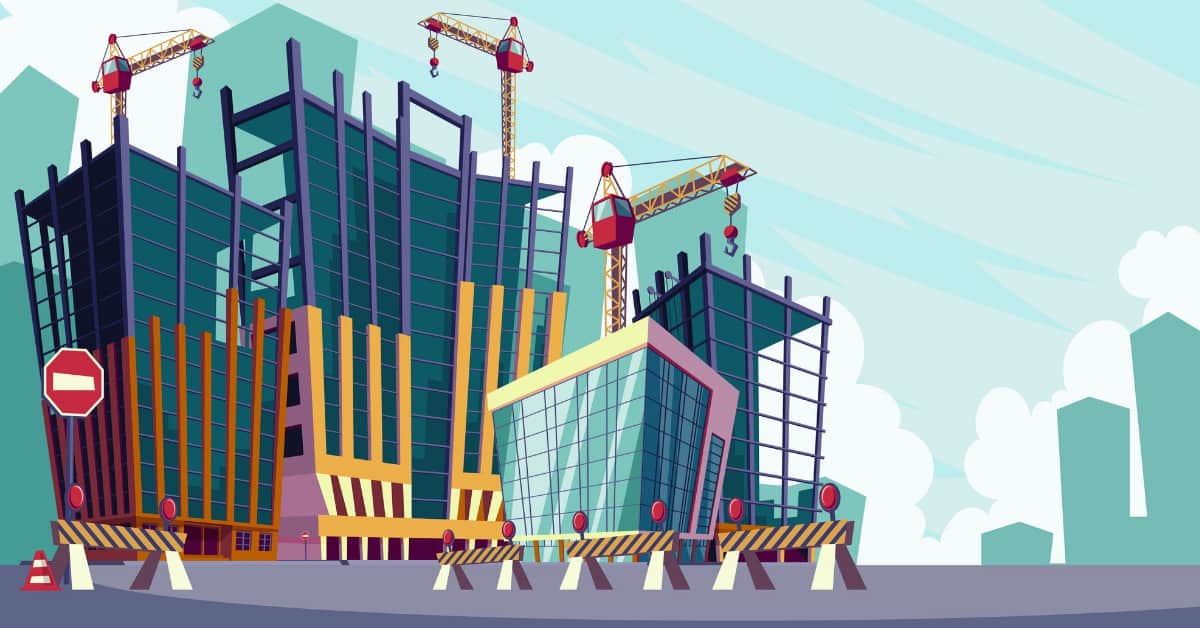Design-build Contract is a popular contracting method used all over the world, including in the United States. As the name implies, this type of contract incorporates design and construction, also known as project delivery, into a single agreement.
Design-build will save time over other contracting methods and avoid cases in which the owner is caught between the designer and the contractor in contract disputes. On the downside, a design-build contract may present some challenges, such as situations in which the final cost cannot be easily determined or projected.
What is a Design-Build Contract?
Design-build is a project delivery method in which a single entity, the design-build team, works under a single contract with the project owner to provide design and construction services. One entity, one contract, and one unified flow of work from concept to completion.
Design-build is also referred to as design/build and single-source responsibility. Design-build contracts deliver superior results around the country and around the world, including office buildings, schools, stadiums, transportation, and water infrastructure.
Characteristics of Design-Build Contract
The defining characteristic of the turnkey design-build contract is simply the presence of only one contract. All other types of typical construction contracts include at least two contracts. Design-build is often described as “sole-source” or “single-source” contracting. If there is a change or problem with either the design or the construction, the owner works with a single source—the contractor—for resolution or approval.
A design-build contract requires designers and builders to collaborate to produce construction drawings and analyze a logical construction sequence. Because of this single-source collaboration, both design and construction can be completed in stages rather than working from a complete design from the beginning of the project.
When is Design Build Contract Used?
Design build contract is typically used when there is an opportunity for the owner or agency to save time by starting construction before the final design is complete. In the traditional design-bid-build system, the owner contracts separately with a designer and a builder, and the design must be completed before the owner issues a request for construction bids. Design-build can save time and, in some cases, money for the owner by combining both aspects of project delivery under a single agreement and thus a single bidding process.
In addition to projects with short timelines, design-build is frequently preferred by federal agencies that need to expedite projects so that the return on investment can be realized sooner.
What are the elements of a Design and Build Contract?
A standard Design and Build contract includes three key documents: the employer’s requirements, the contractor’s proposals, and a contract sum analysis.
1.Employer’s requirements
The project owner creates this, which effectively acts as an outline design. This document is being used by the employer to decide exactly what he wants. As a result, even though the design-builder is in charge of the project’s design, the employer is still required to provide some design input from the beginning.
This document is created largely for the reference of the design-build contractor, in order to guide him in coming up with a contractor’s proposal, and also to facilitate the accurate pricing of the design-builder’s works.
Certain information is usually included in the employer’s requirements, but this can vary depending on the size of the project and the complexity of the employer’s requirements. This information includes, but is not limited to:
- An overview of the project
- Pre-acquisition or survey reports
- Due diligence
- Proposed form of building contract
- Contract-specific terms and conditions
- Proposed tender and construction programme
- Detailed scope of works
- Health and safety compliance
- Mechanical and electrical installation performance specification
- Concept and detailed design proposals
- Soil investigation reports
2.Contractor’s proposals
This is a document produced by the design-build contractor in response to the employer’s requirements. In this document, the design-build will set out a more detailed design based on the employer’s requirements, which will need to be refined during the project. Essentially, the proposal demonstrates how the design-builder intends to satisfy the requirements of the employer.
Details that should be included in the contractor’s proposal are:
- Specific details about the project: the parties’ names, addresses, telephone numbers, the contract date and the job number
- Scope of the design-builder’s proposals
- Materials to be used
- Method of construction
- Site layout for temporary office and carnage
- Services to be provided
- Items to be provided by the employer
- Disclaimers
3.Contract sum analysis
Finally, most Design and Build contracts include a contract sum analysis. This is basically a breakdown of the contract sum and is compiled by the design-builder. This document is intended to show each element of the works along with the prices. This serves many purposes:
- Enable the project-owner to value changes or variations in the employer’s requirements
- Indicate the sum the design-builder needs to carry out the necessary work
- Assist with interim payments to the design-builder, and the calculations of interim certificates and payments
Advantages of Design-Build Contracts
- Reducing the time of design. Faster Delivery — collaborative project management means work is completed faster with fewer problems
- Simplifying the construction drawings
- Leaving value engineering alternatives available for discussion and analysis during the project
- Shortening the construction schedule
- Limiting communication channels to a single point of contact
- Minimizing change orders
- Fast-track schedules
- Customizing the design to actual site conditions more easily
- Identifying long lead items earlier
- Allowing for the project to be repeated
Disadvantages of Design-Build Contracts
- The project outcome could not produce the desired result
- A project that is not scheduled properly may be substantially delayed
- The Design-Build contract doesn’t impact labor costs
- Final costs can be higher than original estimates
- Design-build eliminates the possibility of using an integrated design
- The counterweight between a contractor and the design team can be reduced, resulting in some conflicts
- The architect’s vision may appear to favor the contractor
- If the project’s inspector and team are inexperienced, problems can happen on a regular basis, requiring costly repairs
Role of a Contractor in a Design-Build Contract
A general contractor is typically the contractor in a design-build contract. In some cases, a professional designer, such as an architect, engineer, or architectural technologist, will be in charge of the project.
The primary role of the contractor in a building project is to coordinate construction activities to ensure that the project is completed on time and within the budget. Contractors will plan, lead, execute, supervise, and inspect the project from start to finish.
When working under a design-build contract, a contractor will collaborate closely with the designer on the project. Together, these two professionals can ensure that the project is completed according to the client’s specifications.
Variations of the Design-Build Concept
There are several variations on the standard design-build contract:
- Bridging: The client develops a preliminary project design at a level of 30% to 50%
- Turnkey: The client requires outside expertise and then allows the entity to turn over the keys at project completion
- Design-Build-Warranty (D-B-W): Combines a warranty provision with design-build
- Design-Build-Maintain (D-B-M): Combines maintenance provisions with design-build
- Privatization: Private entity designs, builds, and maintains a section of roadway in turn for a toll or fee









